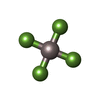+Search query
-Structure paper
| Title | Structural analysis of RIG-I-like receptors reveals ancient rules of engagement between diverse RNA helicases and TRIM ubiquitin ligases. |
|---|---|
| Journal, issue, pages | Mol Cell, Vol. 81, Issue 3, Page 599-613.e8, Year 2021 |
| Publish date | Feb 4, 2021 |
 Authors Authors | Kazuki Kato / Sadeem Ahmad / Zixiang Zhu / Janet M Young / Xin Mu / Sehoon Park / Harmit S Malik / Sun Hur /   |
| PubMed Abstract | RNA helicases and E3 ubiquitin ligases mediate many critical functions in cells, but their actions have largely been studied in distinct biological contexts. Here, we uncover evolutionarily conserved ...RNA helicases and E3 ubiquitin ligases mediate many critical functions in cells, but their actions have largely been studied in distinct biological contexts. Here, we uncover evolutionarily conserved rules of engagement between RNA helicases and tripartite motif (TRIM) E3 ligases that lead to their functional coordination in vertebrate innate immunity. Using cryoelectron microscopy and biochemistry, we show that RIG-I-like receptors (RLRs), viral RNA receptors with helicase domains, interact with their cognate TRIM/TRIM-like E3 ligases through similar epitopes in the helicase domains. Their interactions are avidity driven, restricting the actions of TRIM/TRIM-like proteins and consequent immune activation to RLR multimers. Mass spectrometry and phylogeny-guided biochemical analyses further reveal that similar rules of engagement may apply to diverse RNA helicases and TRIM/TRIM-like proteins. Our analyses suggest not only conserved substrates for TRIM proteins but also, unexpectedly, deep evolutionary connections between TRIM proteins and RNA helicases, linking ubiquitin and RNA biology throughout animal evolution. |
 External links External links |  Mol Cell / Mol Cell /  PubMed:33373584 / PubMed:33373584 /  PubMed Central PubMed Central |
| Methods | EM (single particle) / EM (helical sym.) / X-ray diffraction |
| Resolution | 1.92 - 4.3 Å |
| Structure data | EMDB-22368, PDB-7jl0: EMDB-22369, PDB-7jl1: EMDB-22370, PDB-7jl2: EMDB-22371, PDB-7jl3:  PDB-7jl4: |
| Chemicals |  ChemComp-ZN:  ChemComp-ADP:  ChemComp-ALF:  ChemComp-MG:  ChemComp-GOL:  ChemComp-HOH: |
| Source |
|
 Keywords Keywords | HYDROLASE/IMMUNE SYSTEM/RNA / Innate immunity / Ubiquitin E3 ligase / dsRNA / RNA helicase / TRIM family / HYDROLASE-IMMUNE SYSTEM-RNA complex / HYDROLASE/TRANSFERASE/RNA / E3 ligase / helicase / antiviral signaling / RLR / dsRNA sensor / HYDROLASE-TRANSFERASE-RNA complex / ATPase / IMMUNE SYSTEM / RIG-I-like helicase |
 Movie
Movie Controller
Controller Structure viewers
Structure viewers About Yorodumi Papers
About Yorodumi Papers











 homo sapiens (human)
homo sapiens (human)